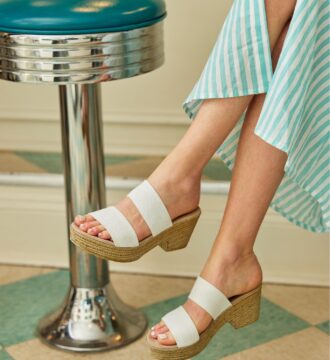It’s 10 a.m. on a Monday, and I’m at my local coffee shop eating a bagel and writing this column. This morning, I sent update emails for my current projects, and this afternoon I have two conference calls. Since I don’t have to be visible to any of my clients today, I’m in jeans and a sweater. This is the good side of working for yourself.
In other words, my work is flexible (I can do more than half of my client work remotely), enjoyable (I’m working on projects I am passionate about), and pays the bills (I have enough client contracts to keep my bank account where it needs to be for the next few months). These are the times when I love working for myself, and I wouldn’t take an office job if someone offered me one.
But, it’s not always sunshine and roses.
Last spring, I had two conferences back-to-back, one in Las Vegas and the next in San Diego. I was living on airplane snacks and over-priced hotel food, mostly on my own dime, because while I do sometimes get paid to speak, in both of these cases I was there for the exposure. This is one of the ways that I get clients — I attend industry events, network like crazy and spend way too much time talking about myself.
Before you say, “But, Katy, you were in Las Vegas. You can’t tell us you didn’t have fun,” I want you to imagine spending five straight days inside a hotel, without seeing the light of day, in consecutive sessions, thousands of miles from your family. Despite the positives, it can definitely be a grind — it’s work, not a vacation.
Working for yourself means that you need to do everything that a business typically has a staff for — marketing, sales, financial management, service delivery, IT and more. While I love what I do, I’m typically not doing it 100 percent of the time. When I get asked about my freelance workload, I tell people that I spend less than 50 percent of my time actually doing billable work. If you’ve ever wondered why freelancers charge more per hour than employees are paid, that’s the reason.
Well, it is one of the reasons.
Another surprising downside to freelancing is the way we pay our taxes. Each year, four times per year, I write an enormous check to the IRS. Remember when you got your first job, and realized that 7.5% of your income gets taken right off the top for FICA before you even get to your federal and state taxes? You might not have known that you, as an employee, are paying half of that cost. Your employer pays the other half. If you are self-employed, you get to experience the joy of paying both halves. That’s right, 15% of my revenue goes straight to the tax bill, and that’s before I pay a penny of income tax.
That’s not even the ugly part.
Last spring, I had a drought. I went two full months without any income. It was terrifying. Even if you do everything you’re supposed to do, including going to conferences, networking, and keeping your clients happy, sometimes you still have dry spells. The good news is that I put aside money to get me through times like this. The bad news is that it’s incredibly stressful to burn through that money so quickly, and have no idea where your next gig is coming from.
Working for myself has been one of the best things I’ve ever done. I get to work on interesting projects, collaborate with great people and make my own schedule. Even with the challenges, both the bad and the ugly, I still enjoy what I do. Would I love to have a magic wand to wave when I’m low on clients? Yes, unquestionably. Would I like to spend less time on some of the operational aspects of my business? Of course. Do I sometimes envy my friends who have regular paychecks and benefits? Yes.
But, I’ve learned that even with the ups, the downs, the good, the bad and the ugly, I’d still choose to work for myself.



 3 min read
3 min read


